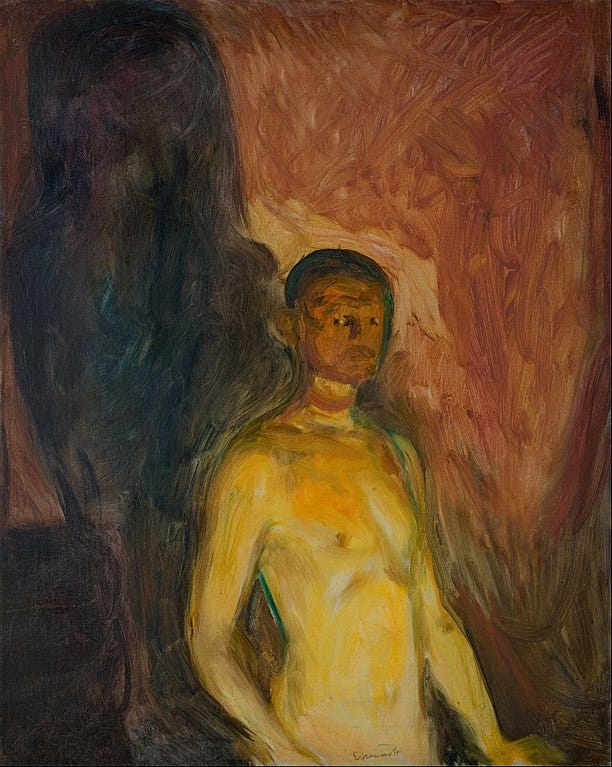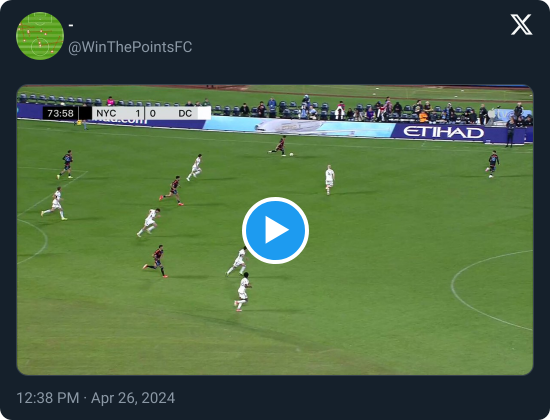The Yips
Mounsef Bakrar has shined at everything except the thing that matters the most for strikers.
On a crisp afternoon in the Bronx, the crowd watched with foreboding as what should have been a routine play unfolded with the ball sailing high and wide across the first base line at Yankee Stadium. It was the kind of mistake that when you are an athlete you don’t even need to finish your follow-through to know that the ball's trajectory was not on target and was going into the stands.
While you can probably recall numerous goal-scoring opportunities for Mounsef Bakrar that ended similarly, the dejected athlete in this instance was not the Algerian striker but rather former Yankees second baseman Chuck Knoblauch.
In 2000, Knoblauch lost the ability to make consistently accurate throws to first base. This was shocking not only because it was the kind of routine play he had executed thousands of times1 in his professional career but also because he was awarded the 1997 Golden Glove while with the Minnesota Twins as the most outstanding fielding second baseman in the American League.
Knoblauch’s throwing woes culminated in his infamous beaning of Keith Olbermann’s mom and a six-inning, three-error performance on June 16, 2000, prompting him to depart Yankee Stadium before the game was over. This performance marked a turning point for the four-time All-Star, as he would never regain his previous form. In 2001, Yankees manager Joe Torre banished him to the island of misfit ball players- left field. Knoblauch never played second base in the majors again.
How does someone transition from winning awards for their fielding to struggling with basic throws? This phenomenon is colloquially known as the yips. Dr. Naveed Saleh, writing for Psychology Today, defines the yips as a "psycho-neuromuscular impediment interfering with the execution of fine motor skills during sport."
For Mounsef Bakrar, the crucial fine motor skill he's struggling with is perhaps the most vital for a striker: the ability to effectively kick the ball into the net. Currently, Bakrar is significantly underperforming his expected goals (xG) mark by a historically large margin. With a G-xG of -0.48 per 96 minutes, he holds the record for the worst underperformance in the American Soccer Analysis database, which dates back to 2013, among players who have logged at least the 726 minutes Bakrar has played this season.
It’s crucial to contextualize that number. Regular readers of The Outfield understand that the degree to which a player underperforms or overperforms xG isn't necessarily a reliable indicator of finishing skill but rather statistical noise due to a small sample size. Expected goals serve as an excellent metric for assessing a player's ability to generate high-quality scoring opportunities. The more adept a player is at creating these opportunities, the higher their likelihood of scoring goals. Therefore, as we expand a player's dataset with more shots, the disparity between expected goals and actual goals is likely to diminish.
There's no better example of this than Taty Castellanos' 2021 campaign. Despite posting elite xG numbers, Taty endured a goal drought lasting nine games over nearly two months of the regular season, and everyone freaked out. However, by the end of the season, Taty not only led the league in both expected and actual goals but also secured both the Golden Boot and the MLS Cup Championship. For Bakrar, New York City FC's hope must be that he will experience a similar turnaround to Castellanos.
However, waiting is not easy, especially in the aftermath of last week's miss against DC. Following a superb turn to maintain possession by Santiago Rodriguez, the No. 10 located winger Hannes Wolf streaking up the left sideline. Bakrar showcased precisely why NYCFC holds him in such high regard during this play. In transition, Bakrar's pace and intelligent runs make him a nightmare for defenders to contend with. When DC's defender committed to recovering to Wolf, Bakrar instantly adjusted his run from the near post to the open space at the penalty spot. After Wolf delivered the cross, all Bakrar needed to do was put the ball on target to capitalize on his excellent work in that sequence. However, he couldn't execute, collapsing to the pitch in agony.
It's difficult to believe that Bakrar's current scoring drought stems from a lack of skill. According to Wyscout, in 2504 professional minutes playing in Algeria and Croatia, Bakrar maintained a relatively balanced ratio of 0.4 goals to 0.35 expected goals per 90 minutes. This indicates that he has several professional seasons under his belt where he efficiently created high-quality scoring opportunities and converted them at an expected rate. It's reasonable to project that with more playing time and more shots, Bakrar's actual goal tally will eventually align more closely with his expected goals.
A compelling argument can be made that Bakrar has improved since joining New York City. His xG per 90 minutes has surged to 0.60, indicating that he is generating even more high-quality goal-scoring opportunities in MLS, facing tougher competition than he did in Europe. His ability to spearhead NYCFC’s press from the front is reminiscent of Taty and significantly contributes to the team's third-place standing in MLS in terms of Passes Allowed Per Defensive Action (PPDA).2 Furthermore, his hold-up play, which played a pivotal role in the buildup to Santi’s goal against DC, has noticeably improved.
At this juncture, it's challenging to dismiss the possibility that Bakrar may be experiencing the yips or some other form of psychological pressure that is causing him to falter in goal-scoring situations. Despite his increased xG numbers since joining MLS, there has been a notable decrease in the percentage of shots he manages to put on target, dropping over 21% from 41.9% in Algeria and Croatia combined to 33.9% in MLS. Additionally, his post-shot xG, a metric indicating how likely a goalkeeper is to save a shot on target, reveals that when Bakrar does manage to put a shot on target, his shot placement has been notably poor this season.
So, what comes next? It was sad to see how crushed Bakrar was after being substituted and while talking to the media after the game, despite the 2-0 result. As there are no evidence-based treatments for the yips, it will likely fall to Nick Cushing and possibly a City Football Group sports psychologist to devise a plan. In the short term, the obvious choice seems to be starting Serbian wunderkind Jovan Mijatovic at striker, allowing Bakrar the opportunity to reset himself while coming off the bench.
Whatever happens during the game, it's essential to heed the call of The City Boy’s Javier Gutierrez, as penned in Hudson River Blue this week, and show support for Bakrar with a cheer in the 9th minute at Yankee Stadium today. Some, like Chuck Knoblauch, were never able to recover from similar struggles. It would be a tragic outcome considering Bakrar's flashes of potential as a true complete forward in MLS. ❧
Image: Edvard Munch, Self-Portrait in Hell
Baseball reference has Knoblauch accumulating 3821 assists playing second base. Safe to assume a vast majority of those assists were throws to first base. https://www.baseball-reference.com/players/k/knoblch01.shtml#all_standard_fielding
A metric that (imperfectly) can help measure the intensity of a team's press







